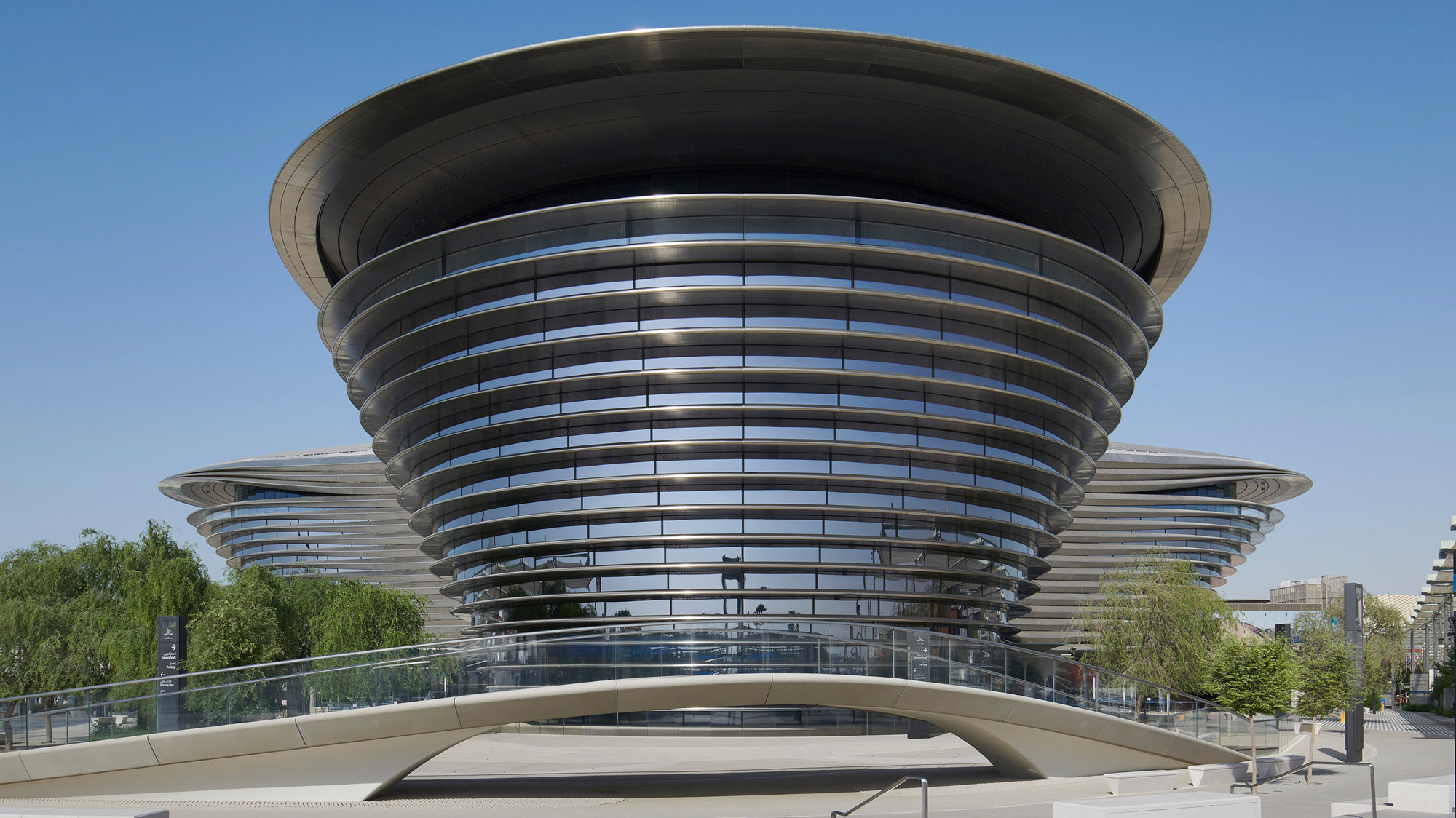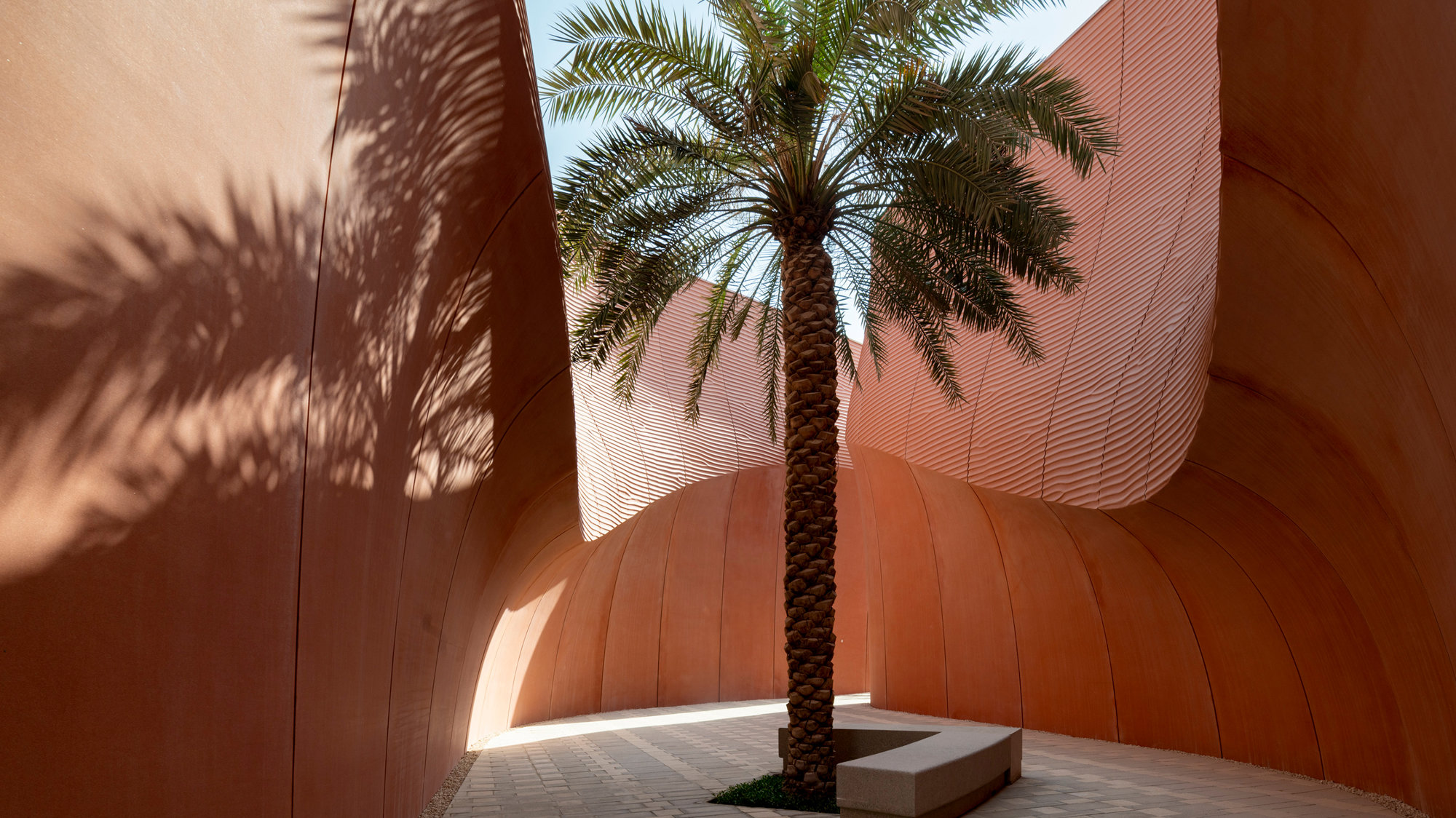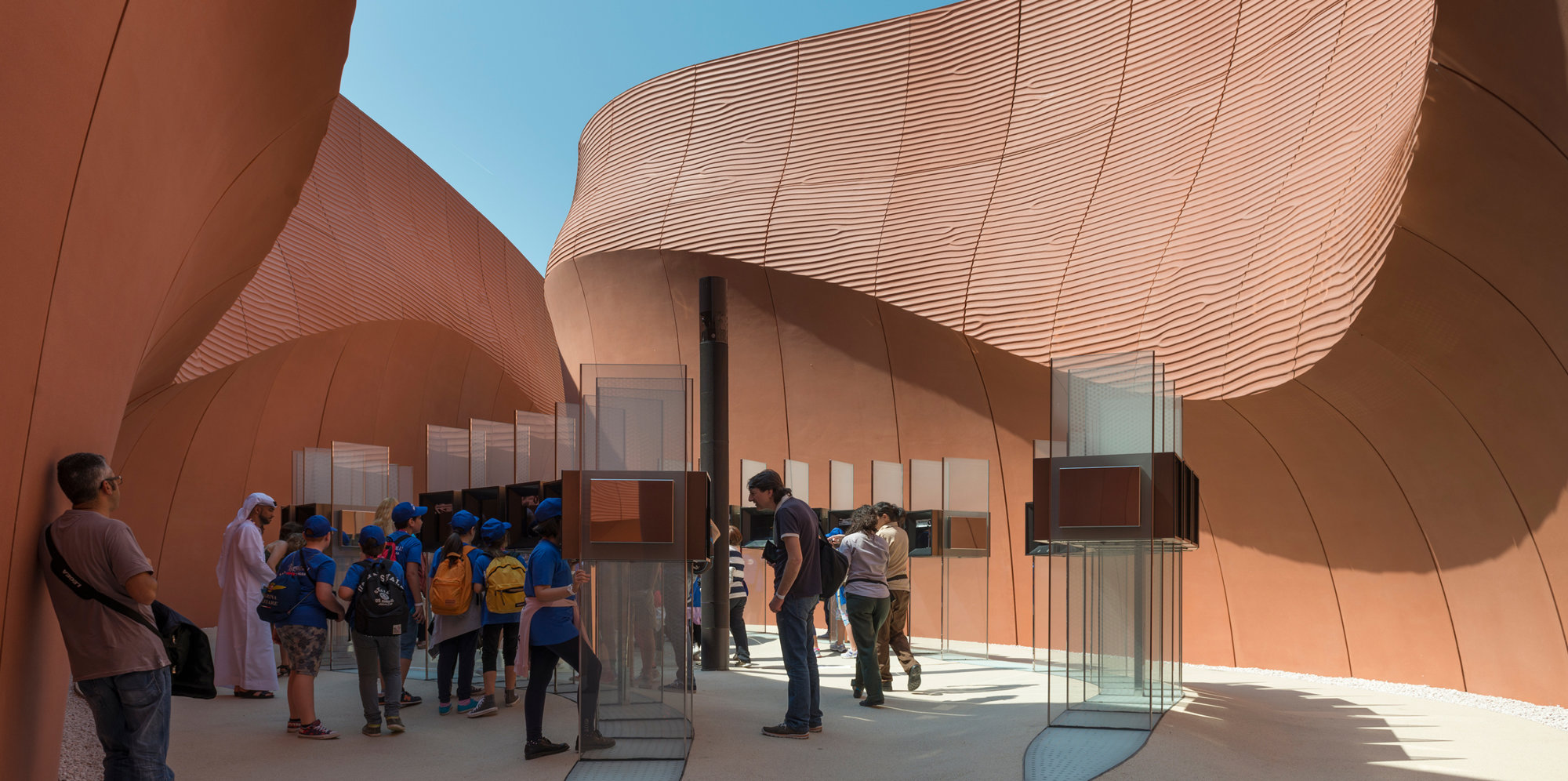Between 2010 and 2020, Foster + Partners designed three unique pavilions for Expos across the world. While the earlier two pavilions were designed to be relocated at the end of their respective international exhibitions, the latter has become a permanent element of District 2020 in the UAE. In each case, considering the pavilions’ legacy and potential for flexibility has been central to the design process. By sympathetically adapting these structures to extend their lifespans beyond the Expos, the pavilions have all been sustainably repurposed.
One of Expo 2020 Dubai’s three signature pavilions, Alif - The Mobility Pavilion (named after the first letter of the Arabic alphabet and symbolising the beginning of progress and new horizons), occupies a dedicated plaza at the south entrance. As part of their brief, the client specified that the pavilion would remain on site after the Expo and should be flexibly designed to accommodate future uses.
Foster + Partners responded by designing a structure that is divided into three key zones, each forming a petal in the tri-foil plan. During the Expo, each zone is a dark, triple-height space where visitors view immersive and interactive displays. When the exposition ends, the pavilion can be converted into a flexible workspace by infilling these volumes. Lugs, beams and lightweight flooring can easily be added to the structure’s steel frame, dividing up the spaces. The design team has considered how the pavilion would be split sectionally, with a generous floor to floor standard. Windows and skylights that are currently covered for the exhibition will be restored to full transparency, allowing natural light to penetrate the office spaces. Stepped and overhanging canopies will provide shading. Although many elements of the pavilion are permanent, the client’s future needs have been anticipated and incorporated within the design.
Foster + Partners’ head of studio, Gerard Evenden, underlines the pavilion’s sustainable credentials and its ability to flexibly accommodate future uses. ‘The idea of legacy is fundamental to the project,’ he says. ‘The design of the pavilion needs to be considered beyond its immediate purpose, something that is vital in terms of sustainability. When we calculate the impact of buildings on the planet, we have to think about the overall lifecycle of the building and how it can be extended and maximised.’
The practice has also previously designed the UAE Pavilion for the 2015 Expo in Milan. The national pavilion occupied a large site close to the centre of the Expo and was accessed via its main circulation axis, the decumanus. From here, visitors were drawn into the mouth of a canyon-like space, defined by two undulating 12-metre-high walls. From the outset, the pavilion was designed with two sites in mind – the Expo site in Milan as well as its eventual resting place in Masdar City. Resultantly, the structure was deliberately clad in sand coloured GRC panels, with the same design specifications as the Masdar Institute’s facade. Dry construction and a bolted steel frame allowed the structure to be deconstructed and relocated with ease and the pavilion is now the headquarters of the UAE Space Agency in Masdar City.
Senior Partner, John Blythe, recalls how material and structural decisions were made during the design process, based on the pavilion’s two specific sites. ‘From the outset, we knew the pavilion would return to the UAE, so it had to be suitable for both climates. This had a major impact on the overall design and the materials we selected. We chose the red GRC panels when we found out that the pavilion would end up in Masdar City. The pavilion now corresponds with and enhances its immediate surroundings in Abu Dhabi.’
In 2010, Foster + Partners was commissioned by the UAE National Media Council to design the UAE Pavilion for the Shanghai Expo. The pavilion evoked the vast, rolling sand dunes that are a common feature of all seven emirates, providing a showcase for pioneering projects such as Masdar City. In the early stages of the design process, it was established that the pavilion would be relocated and repurposed once the Expo had come to an end. The structure was designed to be demounted and constructed quickly and economically, with a roof that was made up of a triangulated lattice of flat stainless-steel panels, joined by adjustable nodes.
At a later stage, the National Media Council decided that the pavilion would be returned to Abu Dhabi’s Saadiyat Island, to support Manarat al Saadiyat, the cultural and artistic centre. Senior Partner, Martin Castle, describes how the pavilion was adapted to make it suitable for its new locality. ‘Stainless-steel panels were replaced with ceramic tiles, which are more hard-wearing and appropriate for the arid climate.’ In 2020, the pavilion became the Berklee Abu Dhabi Center, hosting the music school’s first educational programs in the Arab world.
The theme of reuse that underlines the design of these pavilions also extends to the practice’s other work. Using the same principles to transform old office buildings into flexible workspaces, industrial districts into retail destinations, and extend the life of historic buildings to reduce their embodied carbon content.












